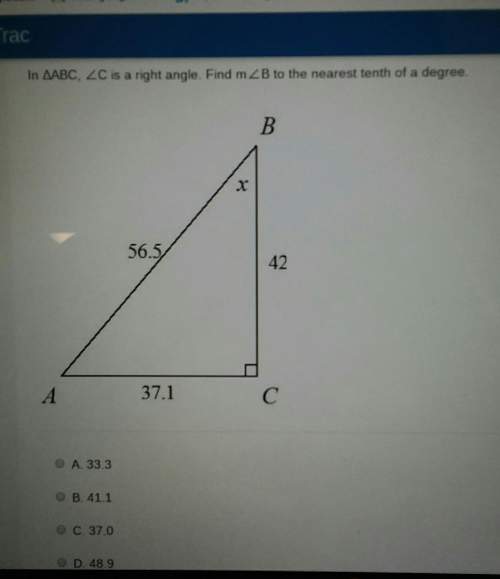
Mathematics, 04.06.2020 14:59 heavendl13
Josiah conducts an experiment that has 4 possible outcomes. Sally conducts an experiment that has 10 possible outcomes. The
students conduct 50 trials each. Which statement best compares the two experiments?
Josiah's results are more likely to be close to the predicted results because he had a smaller number of possible outcomes.
* Sally's results are more likely to be close to the predicted results because she had a larger number of possible outcomes.
Josiah and Sally have the same likelihood of the experimental results being close to the predicted results because they used
the same number of trials.
Josiah and Sally have the same likelihood of the experimental results being close to the predicted results because the
utcome of either experiment is unrelated to the outcome of the other experiment.
The Josiah’s results are more likely to be close to the predicted results because he had a smaller number of possible outcomes
Reasoning: Having more outcomes won’t give you a good prediction

Answers: 1


Another question on Mathematics

Mathematics, 21.06.2019 16:30
Which ordered pair (c,d) is a solution to the given system of linear equations- c+2d=13 -9c-4d=-15
Answers: 3

Mathematics, 21.06.2019 23:00
Jane’s favorite fruit punch consists of pear, pineapple, and plum juices in the ratio 5: 2: 3. chapter reference how much punch can she make if she has only 6 cups of plum juice?
Answers: 1

Mathematics, 21.06.2019 23:00
In january 2010, you began a one-year study of tuberculosis (tb) in a subsidized housing community in the lower east side of new york city. you enrolled 500 residents in your study and checked on their tb status on a monthly basis. at the start of your study on january 1st, you screened all 500 residents. upon screening, you found that 30 of the healthy residents had been vaccinated for tb and therefore were not at risk. another 20 residents already had existing cases of tb on january 1st. on february 1st, 5 residents developed tb. on april 1st, 10 more residents developed tb. on june 1st, 10 healthy residents moved away from new york city and were lost to follow-up. on july 1st, 10 of the residents who had existing tb on january 1st died from their disease. the study ended on december 31, 2010. assume that once a person gets tb, they have it for the duration of the study, and assume that all remaining residents stayed healthy and were not lost to follow-up. is the subsidized housing community in the lower east side of new york city a dynamic or fixed population? briefly explain the rationale for your answer. dynamic population it can changeable people can move out and move in into the population of a subsidized housing what was the prevalence of tb in the screened community on january 1st? prevalence = 30/500 0.06= 6% what was the prevalence of tb on june 30th? prevalence= 40/450=0.08= 8.88% what was the cumulative incidence of tb over the year? cumulative incidence = number of new cases/number in candidate population)over specified time period 10/450 = 2.2% suppose that you wanted to calculate the incidence rate of tb in the study population. calculate the amount of person-time that would go in the denominator of this incidence rate. be sure to show your work.
Answers: 2

Mathematics, 22.06.2019 00:40
Can you divide 25 into 4 equal groups? explain why or why not.
Answers: 1
You know the right answer?
Josiah conducts an experiment that has 4 possible outcomes. Sally conducts an experiment that has 10...
Questions

Mathematics, 11.12.2019 00:31



Physics, 11.12.2019 00:31

Biology, 11.12.2019 00:31


Mathematics, 11.12.2019 00:31



Mathematics, 11.12.2019 00:31




Social Studies, 11.12.2019 00:31



Mathematics, 11.12.2019 00:31

Biology, 11.12.2019 00:31

History, 11.12.2019 00:31




